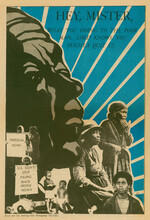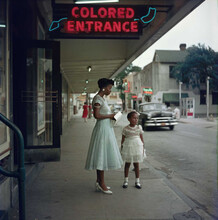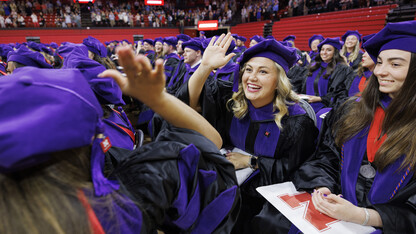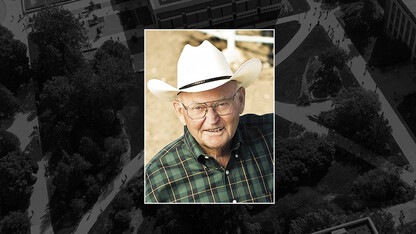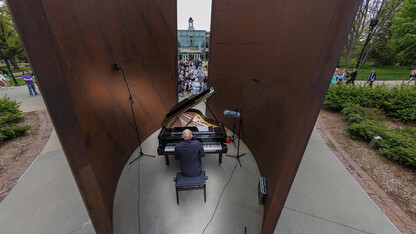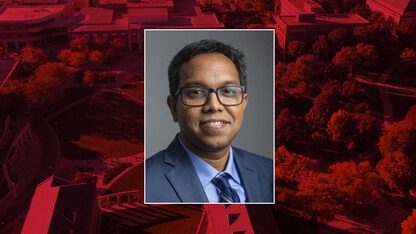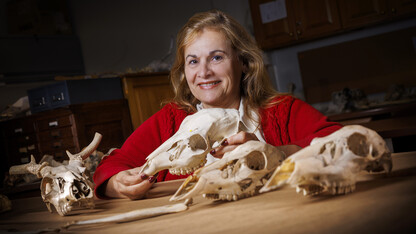· 4 min read
Sheldon opens four exhibitions with social justice theme
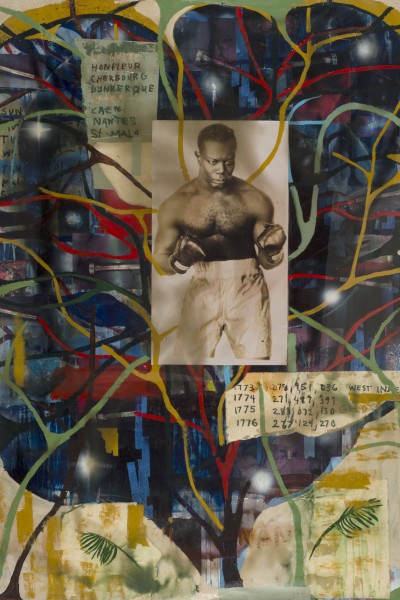
The University of Nebraska-Lincoln’s Sheldon Museum of Art presents four concurrent exhibitions focused on issues of social justice.
“Black Fire: A Constant State of Revolution,” “Emory Douglas: Power to the People, The Struggle Continues,” “Gordon Parks: Segregation Story” and “James VanDerZee: Eighteen Photographs” will be on display from Sept. 11 through Jan. 3, 2016.
“These exhibitions present stories of empowerment and dignity that have enduring visual, moral and emotional impact,” said Wally Mason, director of the museum. “It’s incumbent on us, as a university art museum, to contribute to today’s collective dialogue on social justice.”
The public is invited to an opening reception for the exhibitions from 4 to 7 p.m. Sept. 15. The free event includes a lecture by Emory Douglas at 5:30 p.m. Douglas, former minister of culture for the Black Panther Party, will speak about his work on view at the museum and the capacity of art to inspire self-determination and impel social change.
“Black Fire: A Constant State of Revolution”
This exhibition takes its title from a recording by jazz pianist Andrew Hill, with which it shares an emphasis on moments of transition. Drawn primarily from the Sheldon collection, the exhibition presents a small group of large-scale works that evidence narrative threads of African-American experience from passage of the Civil Rights Act of 1964 to the present.
The exhibition includes works by Radcliffe Bailey, Jean-Michel Basquiat, Dawoud Bey, Willie Birch, Willie Cole, Robert Colescott, Renee Cox, Leonardo Drew, Barkley Hendricks, Norman Lewis, Martin Puryear, Faith Ringgold and Hank Willis Thomas.
“Emory Douglas: Power to the People, The Struggle Continues”
As revolutionary artist and minister of culture for the Black Panther Party, Emory Douglas illustrated and designed the group’s newspaper. Organized jointly by Stacy Asher and Aaron Sutherlen, assistant professors of art at UNL, and Jonathan Frederick Walz, Sheldon’s curator of American art, the exhibition comprises powerful images in the signature style Douglas developed in the 1960s and 1970s.
“Gordon Parks: Segregation Story”
Gordon Parks, a groundbreaking photographer of the postwar years, is best remembered for the commitment to social justice with which he documented American culture from the 1940s until his death in 2006. This exhibition features images from his photo essay “The Restraints: Open and Hidden,” commissioned by Life magazine in 1956. In this body of work, Parks chronicled the everyday lives of a multigenerational black family living in the Jim Crow South.
Only a fraction of the images Parks shot for the assignment were published in Life. The rest were presumed lost for decades. In 2012, the Gordon Parks Foundation discovered more than 200 transparencies constituting the full series.
Recently uncovered images, as well as photographs published in Life, will be on view at Sheldon.
“James VanDer Zee: Eighteen Photographs”
Having opened his first studio in 1917, James VanDerZee documented Harlem’s artistic and cultural renaissance, photographing landmarks, parades, funerals, social clubs, political and religious organizations, affluent families and celebrities.
The photographer’s work gained widespread attention in 1969, when it was shown in the Metropolitan Museum of Art exhibition “Harlem on My Mind.” The portfolio of VanDerZee prints in Sheldon’s collection includes a range of iconic images from studio portraits to documentary photography of activist Marcus Garvey.
Sheldon Museum of Art houses a permanent collection of more than 12,000 objects in a landmark Philip Johnson building on the University of Nebraska-Lincoln City Campus. Sheldon is open free to the public during regular hours: Tuesday, 10 a.m. to 8 p.m.; Wednesday through Saturday, 10 a.m. to 5 p.m.; Sunday, noon to 5 p.m. The museum is closed on Monday. For more information, visit http://www.sheldonartmuseum.org.
